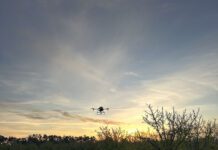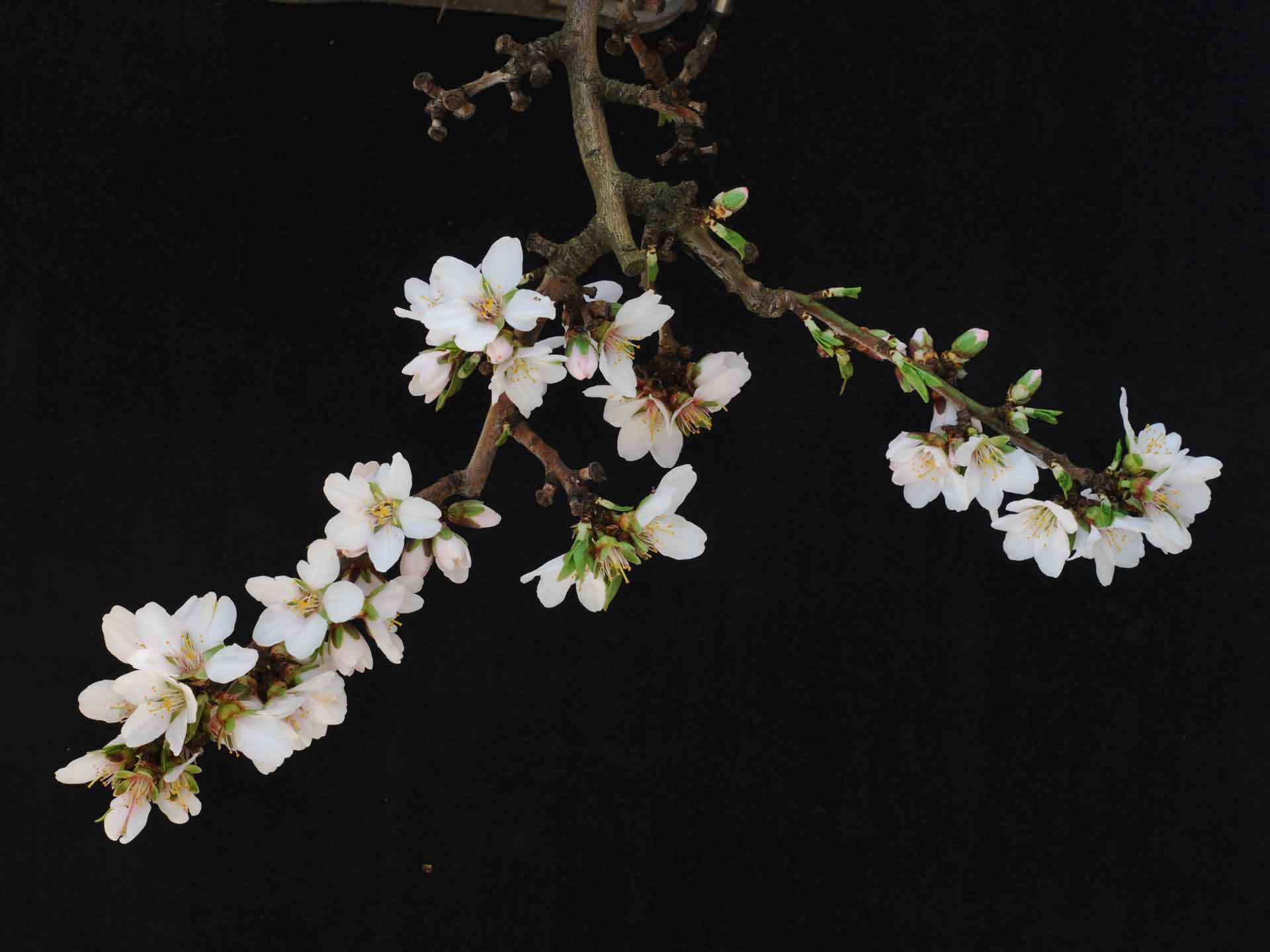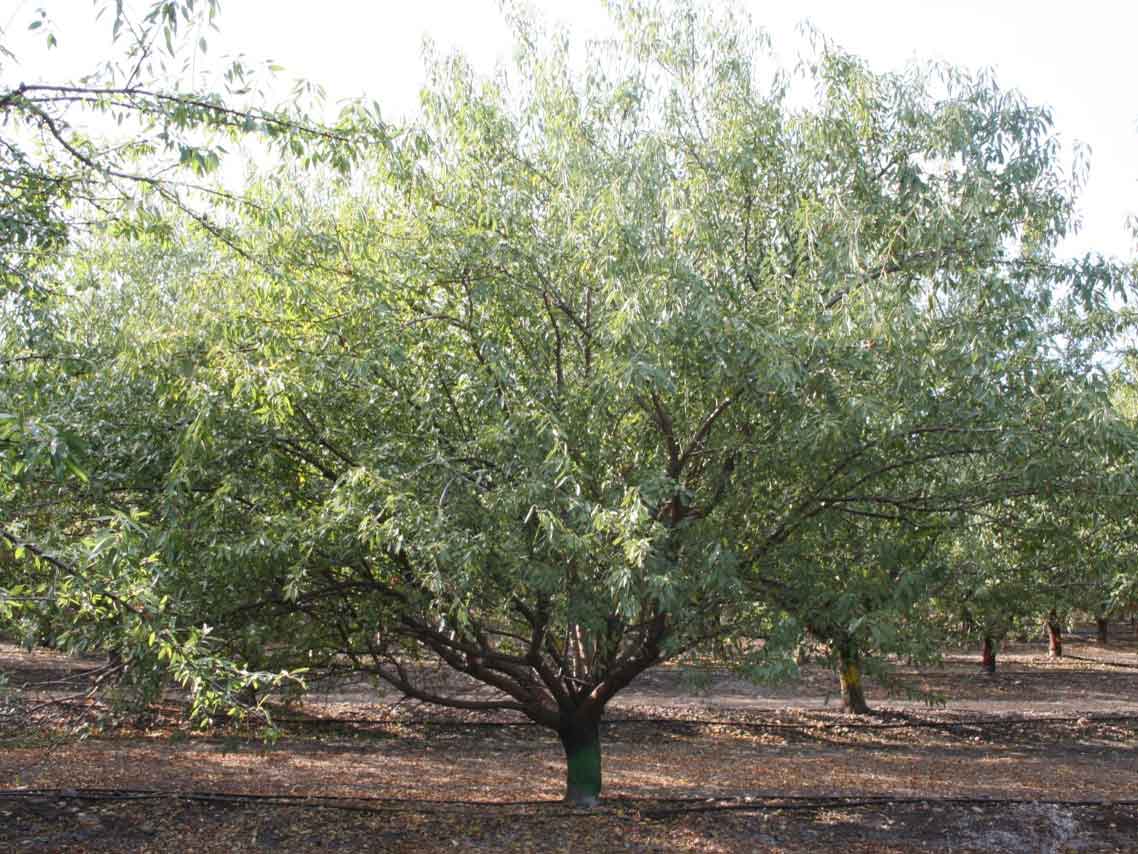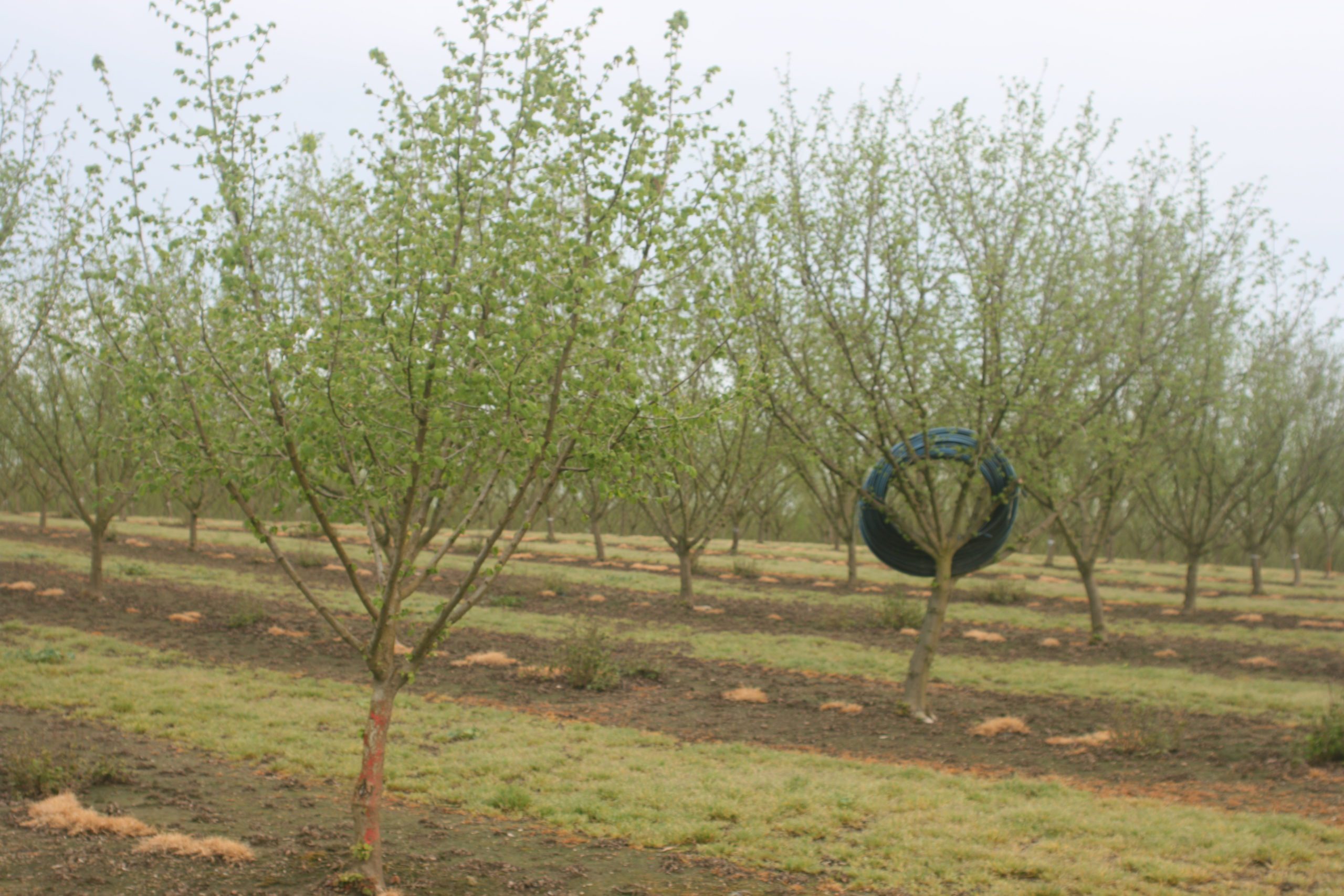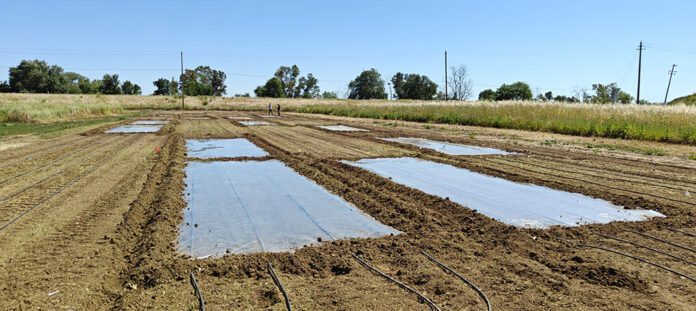
Listen to the audio version of this article. (Generated by A.I.)
Biosolarization, the practice of using a soil amendment, heat and water to suppress soil pathogens, pests and weeds rather than a chemical treatment, isn’t a new concept in agriculture. Now, long-term studies of this practice are showing additional crop benefits.
Traditional solarization has been a pest management tool for decades. Covering moist soil with clear plastic during the hot summer months can increase soil temperatures above 120 degrees Fahrenheit. This method underperforms in orchards because soil heating is limited to shallow depths and is critically dependent on the weather.
Biosolarization involves spreading a decomposable substrate on the soil surface, incorporating water delivery system installation, and keeping the soil moist with a covering. A mix of almond hulls and shells has been used in field trials.
UC Davis researcher Chris Simmons explains that biosolarization can promote inactivation of a broad range of soil pests that are relevant to a variety of crops. In the case of almonds, some of these pests, such as parasitic nematodes and other pathogens, feed on roots and can kill or stunt young trees. This is known as “replant disease” and can affect one-third of California almond acreage if left untreated.
Biosolarization uses multiple modes of action that act together to kill soil pests. In addition to the soil heating, microorganisms in the soil consume and degrade the amended organic matter. In doing so, they convert the sugars from hulls and shells into organic acids that can quickly disperse into deeper soil layers. These compounds are toxic to many pests but are relatively safe for humans and benign soil microbes.
Builds Off ASD
Shruti Parikh, a Ph.D. candidate at UC Davis, explained that biosolarization builds off anaerobic soil disinfestation, another soil amendment process. In the biosolarization process, a clear tarp directly traps solar radiation to heat the soil. This thermal stress component adds to the biopesticidal effect the amendments produce. It can target a wider range of pests, pathogens and weeds and has a prolonged biocontrol effect.
Simmons has conducted field studies in multiple annual crops, with various soil amendments. In almond production, Simmons zeroed in on hulls and shells as an optimum soil amendment because of both availability and the industry need for recycling byproducts.
He said that current data from trials show that there have been persistent benefits to soil nutrient content in the roughly two and a half years following the introduction of almond hulls and shells to the orchard soil after biosolarization. Specifically, organic matter, total nitrogen, total carbon and potassium remain significantly elevated in biosolarized test plots compared to untreated control soil.
Simmons’ five-year study of biosolarization effects on nematode control, soil health and tree vigor, performed with collaborator Professor Amanda Hodson as part of the Western Center for Agricultural Health and Safety, showed multiple benefits to tree growth and yield. Tate Lone, a postdoctoral scholar at UC Davis, who has monitored the field site for several years, said the Nonpareil trees grown in soils that had been biosolarized with Nonpareil hulls and shells resulted in a significant increase in trunk diameter compared to trees in the control group and those planted without the hull and shell amendment. The first yield measurements for trees grown in biosolarized and untreated control plots found that Monterey trees had a significant increase in yield. The mean increase in yield for trees grown in biosolarized soils was 4.8%. Data from prior years showed increases in soil N and K, suppression of parasitic nematodes, greater trunk growth and canopy health.
Hull and Shell Amendment
In Simmons’ trials, almond hulls and shells came intact from the huller. A tub grinder was used to reduce particle size, finding a “sweet spot” at 2 millimeters in size. Larger particles take too long to decompose in the soil, and smaller sizes degrade beneficial compounds. The hull and shell amendment delivered the same soil benefits regardless of whether the hulls and shells were from Nonpareil or other pollinator varieties.
The hull-to-shell ratio in the soil amendment is important, said Gabriele Ludwig, director of sustainability and environmental affairs for the Almond Board. The substrate needs sugars for a rapid food supply for microbes, so the hull and shell mixture must contain enough hull to provide sugars. Since biosolarization is done during warmer weather and hulls and shells are available after harvest, they would have to be stored and kept dry.
Simmons said the Nonpareil hull and shell did provide the best hull-to-shell ratio because of the thinner shell. Pollinator varieties have a harder shell that takes longer to decompose in the soil. Simmons’ trials also looked at VOC mobility in soil, toxicity concerns, and rates of application. With the rate determined at 1% to 4% in the soil, he said phytotoxicity can be tracked and a remediation window can be made to allow for dissipation.
Simmons notes that for the rate determination, the idea is to start small to investigate and generate data, iron out variables and validate performance in the field.

Tarp Requirements
Simmons said the Chico biosolarization trial in 2017 used TIF film, a totally impermeable film, to cover the soil amendment in the test plots. The TIF seven-layer film was “probably overkill,” he said. This film is made from high-strength LDPE (low-density polyethylene) and has an inner core of gas-impermeable barrier resin.
As their research continues, Simmons said they have tested various tarps that met the requirements of trapping heat, allowing light and being resistant to tearing. To eliminate the removal step of the biosolarization process, he said bioplastic films were being investigated. Starch-based bioplastics were found to meet the needs because they maintained integrity during the process and degraded when necessary.
As an Alternative to Chemical Fumigation
Ludwig calls biosolarization “the first IPM tool for soil pest management.” Almond industry leaders have long acknowledged the need for an alternative to chemical fumigation to control soil pests. Ludwig noted the increasing restrictions on the use of fumigants used to control replant disease and nematodes in orchard soils.
“With DPR (Department of Pesticide Regulation) rules affecting the use of fumigants, biosolarization is a process to consider,” Ludwig said.
Biosolarization will not be equally effective in all orchards. In sandy soils, it is difficult to keep moisture levels up. Orchards on hills may also face challenges.
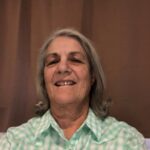
Cecilia Parsons | Associate Editor
Cecilia Parsons has lived in the Central Valley community of Ducor since 1976, covering agriculture for numerous agricultural publications over the years. She has found and nurtured many wonderful and helpful contacts in the ag community, including the UCCE advisors, allowing for news coverage that focuses on the basics of food production.
She is always on the search for new ag topics that can help growers and processors in the San Joaquin Valley improve their bottom line.
In her free time, Cecilia rides her horse, Holly in ranch versatility shows and raises registered Shetland sheep which she exhibits at county and state fairs during the summer.









